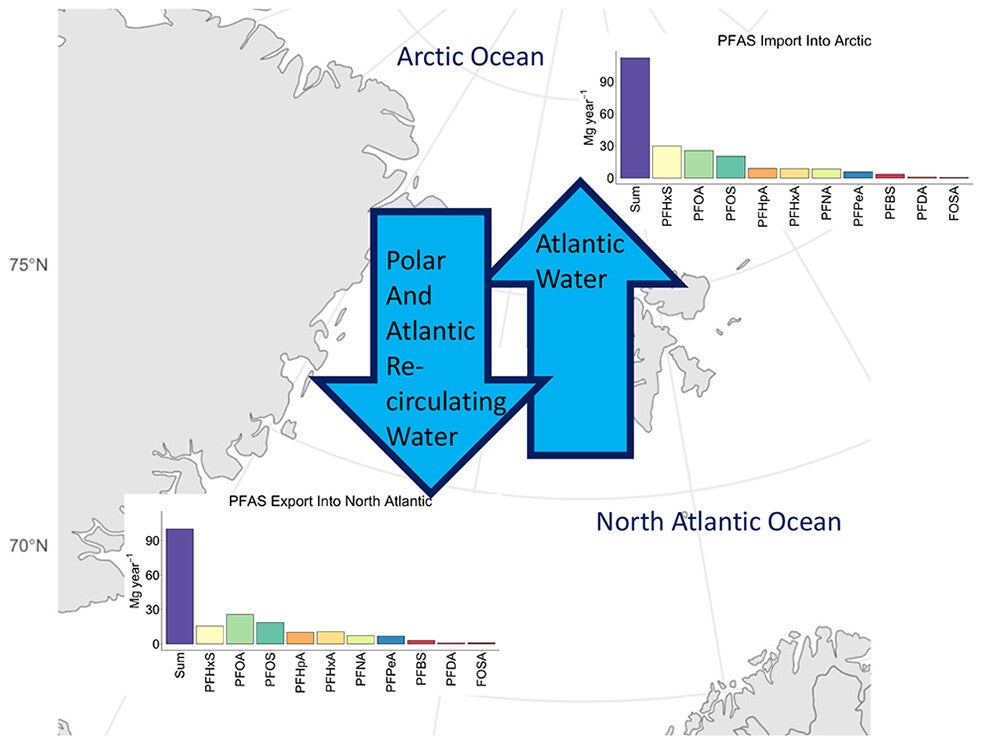Evidence suggests PFAS in the remote northern hemisphere are the result of long-range transport in the air and ocean, and some studies have highlighted the presence and changing composition of PFAS contamination in the Atlantic and Arctic Oceans. STEEP researchers deployed passive samplers across different sites and water depths in the Fram Strait, a passage of water between Greenland and the Norwegian archipelago of Svalbard, with aims to compare PFAS profiles and concentrations to those of legacy persistent organic pollutants from the same sites and assess if sources of pollutants are changing.
Passive samplers, which can be deployed for long periods in dynamic weather conditions, capture and derive representative concentrations and profiles for PFAS. In this study, passive samplers in the Fram Strait were deployed across three depth transects for one year. Results found the regular appearance of ten different PFAS, with profiles and concentrations similar to those previously characterized for polycyclic aromatic hydrocarbons (PAHs), suggesting that PFAS are governed by the same feedback loop, compounded by the addition of atmospheric PFAS, which is then exported via Arctic water circulation.
This study demonstrated the ability of passive samplers to overcome detection limits of PFAS in remote, low-concentration marine environments. This specifically means that passive samplers may make it easier for scientists to measure even low levels of PFAS that have traditionally been too low to reliably quantify. Legacy PFAS like PFOA and PFOS were still present at high concentrations in Arctic water masses, but shorter chain compounds were also routinely present across the Fram Strait, perhaps a reflection industry-shift to shorter-chain replacement PFAS.
Further, results demonstrate a gigantic PFAS feedback loop, as previously suggested for PAHs, circulating in the Arctic Ocean and North Atlantic water masses; release of volatile compounds at mid-latitudes are transported to high latitudes, where they are buoyed by smaller, secondary sources, and finally re-exported to the North Atlantic Ocean.
The research was featured in a University of Rhode Island press release, in Lab Manager Magazine Online, Technology Networks, Phys.org Online, and ecoRI News.
Dunn, M., Vojta, S., Soltwedel, T., von Appen, W., and Lohmann, R. 2024. Passive Sampler Derived Profiles and Mass Flows of Perfluorinated Alkyl Substances (PFASs) across the Fram Strait in the North Atlantic. Environmental Science & Technology Letters 2024 11 (2), 166-171. [DOI: 10.1021/acs.estlett.3c00835]

